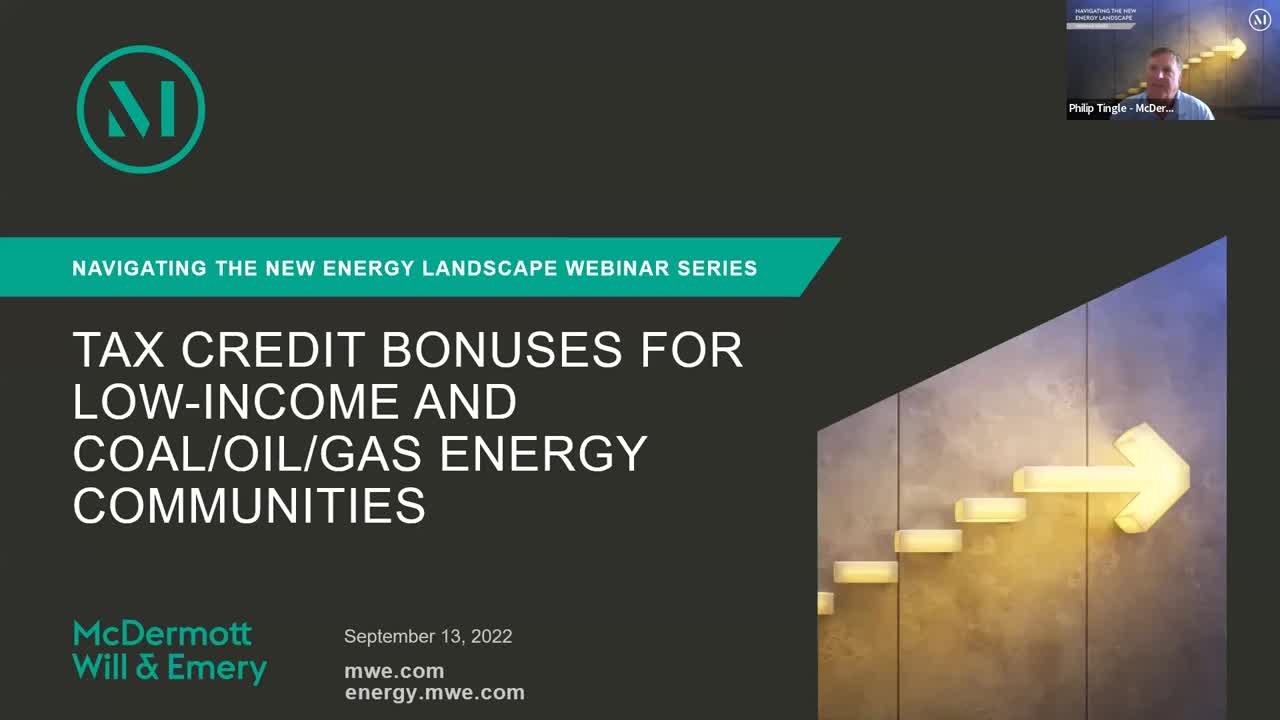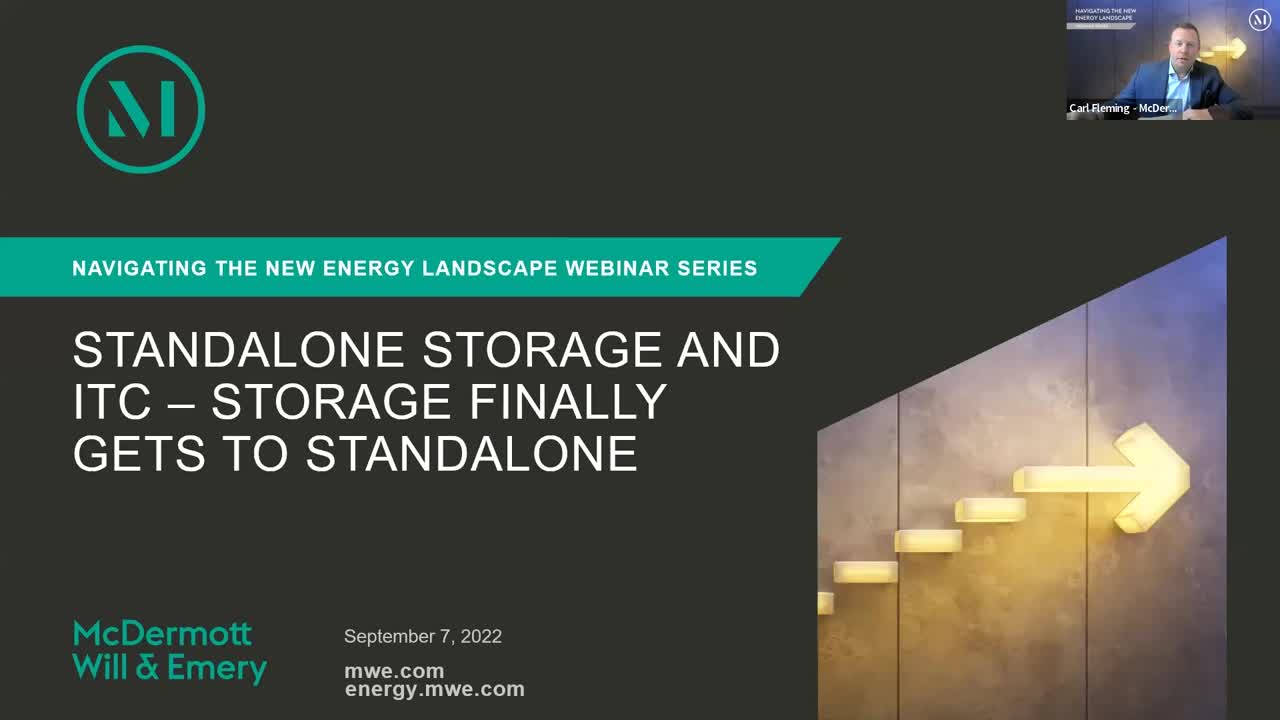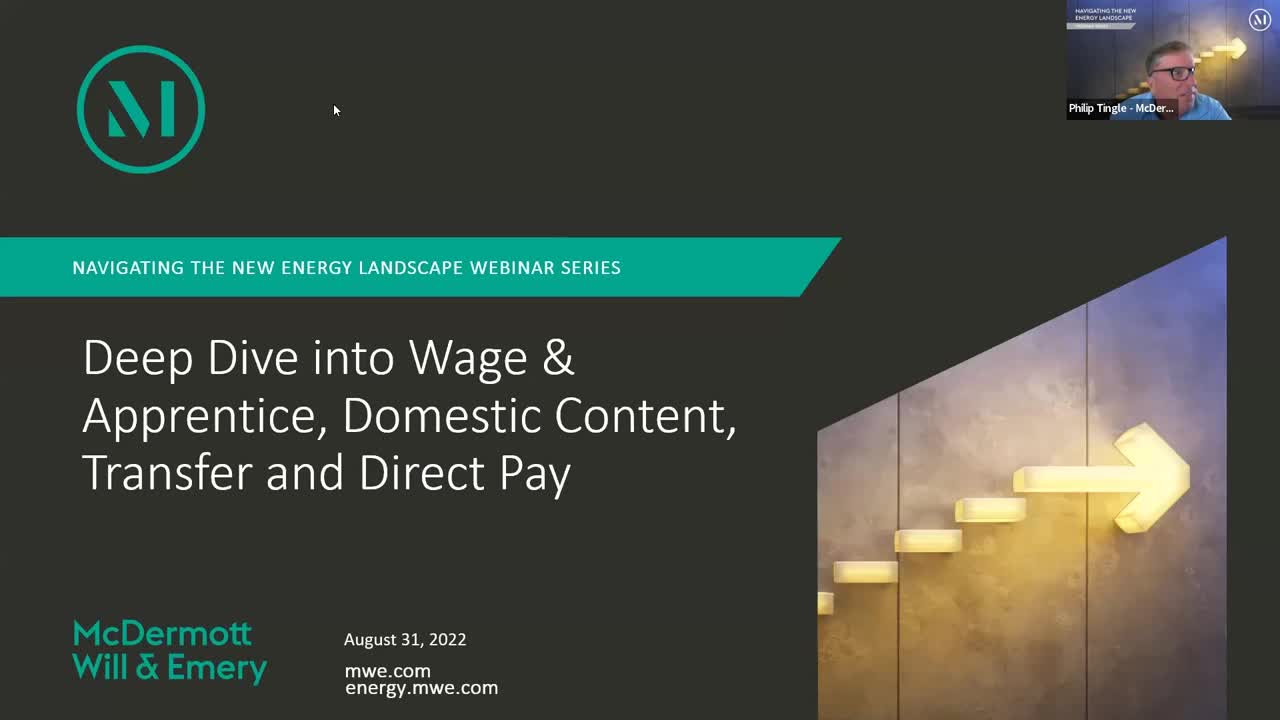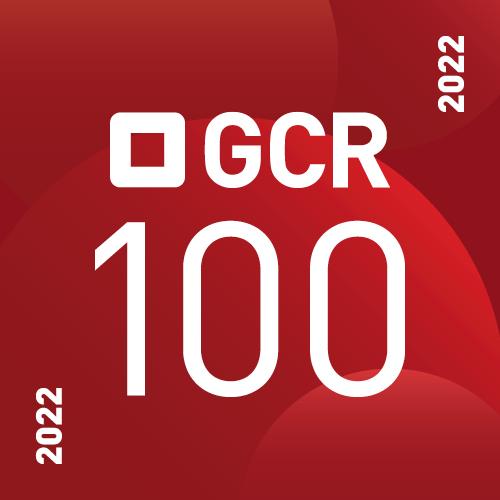On September 28, McDermott Partner Emeka Chinwuba and Star America Infrastructure Partners’ Michael Rueger and Kamil Seidl discussed the effects of the Infrastructure Investment and Jobs Act (IIJA) on the P3 market and what impact the Inflation Reduction Act will have on future energy projects. They also provided an outlook on secondary and brownfield assets and addressed barriers to bridging the funding gap.
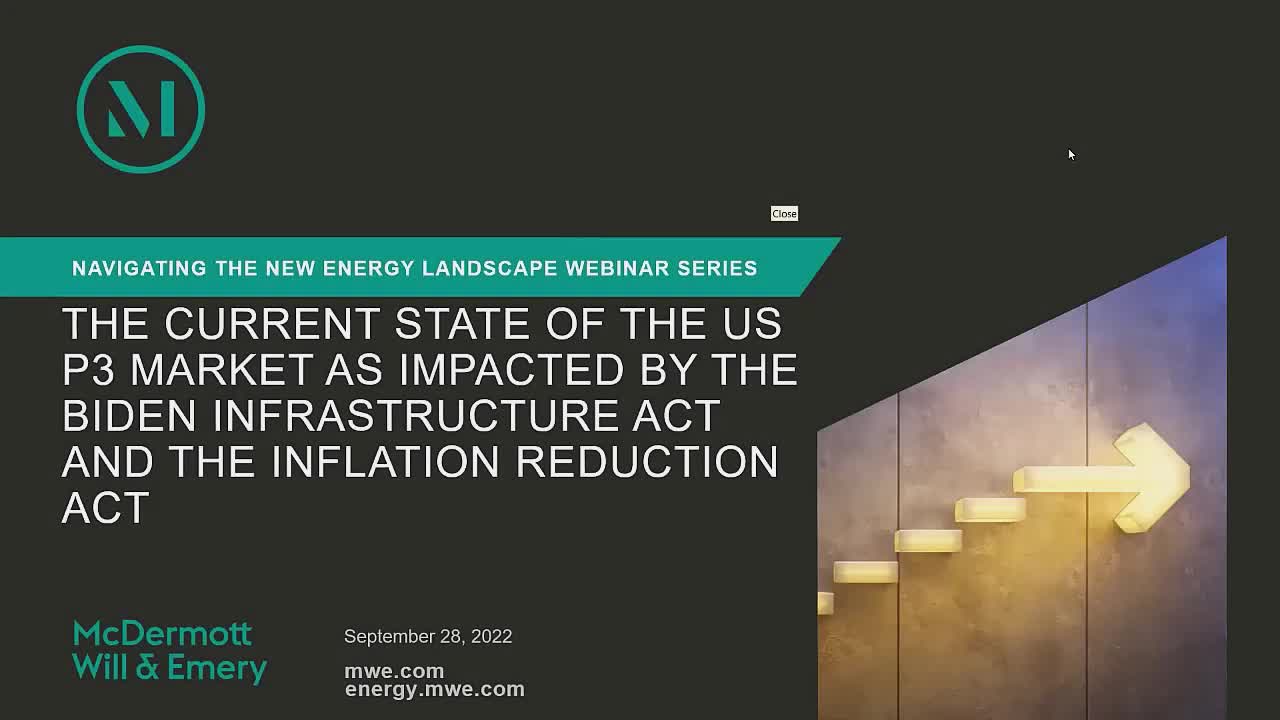
Below are key takeaways from the discussion:
1. There has been an increase in capital raise activity amongst financial sponsors in anticipation of a robust pipeline of infrastructure projects as the impact of IIJA begins to permeate through the US P3 market.
2. Progressive P3 procurement models continue to gain traction as total procurement and project costs can be significantly reduced, especially since the risks can be better defined before pricing is locked in.
3. Political risks remain a concern, especially for user-fee-based infrastructure projects, and the need for P3 champions on a project-by-project basis remains essential to the growth and continued diversification of the market.
To access past webinars in the Navigating the New Energy Landscape series and to begin receiving Energy updates, including invitations to the webinar series, please click here.

